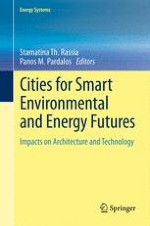2014 | OriginalPaper | Buchkapitel
High Performance Buildings: Measures, Complexity, and Current Trends
verfasst von : Bryan Eisenhower
Erschienen in: Cities for Smart Environmental and Energy Futures
Verlag: Springer Berlin Heidelberg
Aktivieren Sie unsere intelligente Suche, um passende Fachinhalte oder Patente zu finden.
Wählen Sie Textabschnitte aus um mit Künstlicher Intelligenz passenden Patente zu finden. powered by
Markieren Sie Textabschnitte, um KI-gestützt weitere passende Inhalte zu finden. powered by
